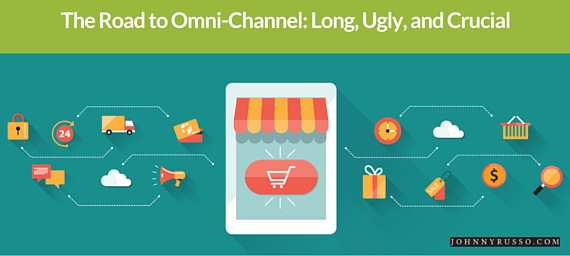Every multi channel retailer has uttered the words omni-channel in the last 12 months. If they haven’t, they probably won’t be around in 12 months. But that’s another topic. It’s more than a buzz word; it’s a crucial element in all future strategies that make the customer experience optimal, and not average.
A few months ago, Worldwide Business Research (WBR), in conjunction with Canada Post, Magento, and OSF Global Services, came out with a study called “Canadian Brands Take the Next Step Into Omni-Channel Retail.”
As the study notes, many retail brands are indeed thinking of omni channel, but very few are acting upon it: “The implementation of strategies and technologies that enable true omni channel shopping has been less consistent.”
In fact, only 28% of the respondents in the study noted that they have many or some omni channel capabilities already implemented.
What is Omni Channel?
Before we get too far, let’s define what omni-channel means from a customer or consumer point of view. Omni channel retail is about actually eliminating channels. So you can buy online, and pick-up in store; reserve online and pick up and pay in store; buy in store, and have the item(s) shipped to you, or walk out with some items, and have the rest shipped to you; buy online, return to store; buy with your mobile phone while in-store, and walk out with the merchandise you just purchased. The customer also wants a real-time view of inventory for all stores that can be viewed online, be able to buy and use cross channel gift cards, and have cross channel loyalty programs applied.
Now let’s define what omni channel means from a retailer’s perspective. It is about servicing all of the elements above for a total retail experience (in addition to having a unified customer account and order history to understand customer preferences), but doing so in an efficient and profitable way. So if a retailer’s distribution center is in Toronto, for example, and a customer in Vancouver orders luggage online from a multi-channel retailer, that retailer would set rules which would include looking at a few local stores to fulfill that order, based on location in order to save shipping costs, and also, reduce time for delivery. So the utopia for multi-channel retailers is to save costs by using stores as mini distribution centers, and to increase customer satisfaction by getting the customer their items more quickly. Or having the customer to all the legwork: reserve online and pick up in store, thus saving shipping costs, and also making the customer happy, as they leave with the merchandise in what could be the same day, or even the same hour.



